I am so excited to finally be writing this post on babywearing!
Babywearing and I had a bit of a rocky start. After lots of frustration, tons of research, and some educational videos, babywearing and I grew quite close. Now babywearing and I are besties and I couldn’t live without it!
One of the reasons I love the art of strapping my baby (now toddler) to my chest using a beautiful sling or wrap is because I am crazy. Crazy in love with my child. Crazy in love with holding my child. And generally just crazy, paranoid, and anxious about keeping my child safe and happy at all times.
I’ve never been one of those mothers who could leave her child sleeping in a room alone or put them in a bouncer or swing too often. Not that I judge mothers who do that! It’s just that my over-active imagination prefers to have my baby as close to me as possible. Trust me, there have been so many times when I wish I could get things done but can’t because I have to stay near Lily while she naps.
Babywearing allows me to get things done with both of my hands all while having my baby within a kissable distance.
My daughter Lily is now almost 1 1/2 years old and loves to run around and be independent. Still, when we go out, I prefer putting her in a sling as opposed to her stroller. It brings me so much comfort to have her close to me and she loves it too!
One of the reasons I decided it was finally time to write this post about babywearing is because I recently witnessed some mamas babywearing unsafely and it really scared me.
I know this sounds like mom-shaming, but cross my heart, it’s not. I just became a little worried that there are still mothers out there who are innocently babywearing incorrectly. I am hoping that by writing this post on the basics of babywearing it can be yet another resource out there for mamas to find and learn from.
What are the benefits of babywearing for the baby?
1. Babies Cry Less
According to a 1983 study done by a team of pediatricians, infants who are carried cry 43% less than babies who are not carried. This is not surprising. If you’ve ever been around a baby, you know the best way to make a baby stop crying is to just pick them up. Wearing your baby means fewer tears!
2. Helps Regulate your Baby’s Body Systems
Being close to your body helps your baby regulate body temperature, breathing, and other body systems. The sound of your heartbeat and the rhythm of your walk is a wonderful way to extend the experience of the womb.
3. Helps with Cognitive Growth
Researchers have reported that carried babies show enhanced visual and auditory alertness. While being worn babies are in a state of quiet alertness, which is shown to be the optimal state for learning. Babywearing also exposes babies to more environmental stimuli from the viewpoint of their parent helping the brain to grow and develop.
4. Helps Humanize Baby
Being worn and in such close proximity to their parent, “…baby becomes aware of, and learns from, all the subtle facial expressions, body language, voice inflections and tones, breathing patterns, and emotions of the caregiver.” (Source)
6. Reduces the Risk of Plagiocephaly
Otherwise known as the flat head syndrome, Plagiocephaly can develop from a baby being placed on its back too often or for extended periods of time. Babywearing takes the pressure off your baby’s head so there’s less chance of flattening.

What are the benefits of babywearing for the mother?
1. Helps Develop Strong Bond
There is something about having your baby strapped to your body that helps you get in tune with one another. You are keenly aware of every breath and every movement which allows for a clearer understanding of their wants and needs. From personal experience, I can say that babywearing can help to create a strong connection and bond between you and your baby.
2. Frees Moms Hands
This is probably the most obvious and loved benefit of them all! Wearing your baby means you don’t have to hold them with both or either of your hands. This means you can complete tasks and do things you may not have been able to do if you had to hold your baby while doing them. The number one thing I love to do while babywearing is cook! Sometimes wearing your baby can mean the difference between getting to eat or starving.
3. Helps with Breastfeeding
Being close to your child, like smelling and feeling them helps strengthen the oxytocin reflex. Oxytocin is the chemical that releases the milk from the ducts in the breast when it’s time for a baby to eat. According to research, it is important to understand the oxytocin reflex, because it explains why the mother and baby should be kept together.
4. Helps Build Back and Core Strength
Babywearing is wonderful, but it can be a workout. Especially as your baby gets older and heavier. This means it is a great way to help strengthen your back and core muscles after they get wrecked during pregnancy. Even though working out is not my favorite, most people see it as a generally positive thing. LOL
5. Helps with Postpartum Anxiety
I have to say that my favorite thing about babywearing is how much it helped with my postpartum anxiety. Who am I kidding? My baby girl is now 1 1/2 years old and I still have anxiety. I am always checking if Lily is okay. Is she breathing? Does she have any rashes? Does she have a fever? Issues with anxiety is a heavy topic that I will not tackle here. I can say that wearing my baby brings me so much peace of mind and comfort when I need to silence my mind if only for a moment.
6. More Compact than a Stroller
Another great benefit of babywearing is that you can ditch the heavy and cumbersome stroller. Of course, there are times when a stroller just makes more sense, but a lot of times babywearing is a lot more convenient. For example, I always wear Lily to baseball games. You do a lot of walking at sporting events and sporting venues are not always stroller friendly. Wearing Lily in situations like that is great.

How do you babywear safely?
Disclaimer: All content provided in this post is for informational purposes only. I will not be liable for any errors or omissions in this information. I will not be liable for any losses, injuries, or damages from the display or use of this information. For further information, please visit our Terms and Conditions page.
Every time you go to put your child in a carrier, mentally go through this 8 point checklist to make sure you are wearing your baby as safely as possible:
1. check for damage on the baby carrier
Before you begin placing your baby in a carrier check for rips, tears, or defects. Never use a sling, wrap or carrier that is damaged or broken in any way.
2. Make sure your baby’s back is supported
Once your baby has been placed in the carrier, always double-check that your baby’s back and neck is fully supported. Make sure that their body is pressed fully against yours and that they are not slumped over. You should be able to press on their back without them moving further forward.
3. Make sure your baby is in the carrier tightly
Your carrier, wrap, or sling should always be pulled comfortably tight. Of course, no one’s circulation should get cut off, but there should not be any slack in the fabric. If the fabric is not pulled tightly, there is a greater chance of your baby accidentally slipping out.
4. Put your baby close enough to kiss
Your baby’s head should always be within a kissable distance. They should not be hanging too low on your body. If you cannot kiss their head by just slightly tilting your head forward, make the necessary adjustments to your carrier in order to bring your baby further up toward your chest.
5. Make sure your baby’s chin is off of their chest
Your baby’s chin should be lifted off of their chest at all times to allow their airways to stay open. Making sure their head and neck are adequately supported will ensure that as you walk their head will not wobble into an unsafe position and inhibit proper breathing.
6. Keep your baby in view at all times
Your baby’s face should be in your view at all times and never be fully covered. Always allow fresh air to flow around your baby’s face.
7. Make sure your baby’s hips are supported
Your baby’s hips should always be well supported. One way to do this is to make sure their knees are higher than their butt. Their legs, knees, and butt should create an “M” shape. All your baby’s weight should be on their butt and not on their legs.
8. Make sure you and your baby are comfortable
No matter how safe your positioning might be if it doesn’t seem comfortable to you or your baby continue making adjustments until it feels right. If you are in a great position that you’re going to be able to stay in for a long period of time, you shouldn’t feel any pain or discomfort. Babywearing takes practice. Keep trying until you find the safest and most comfortable position for you and your child.
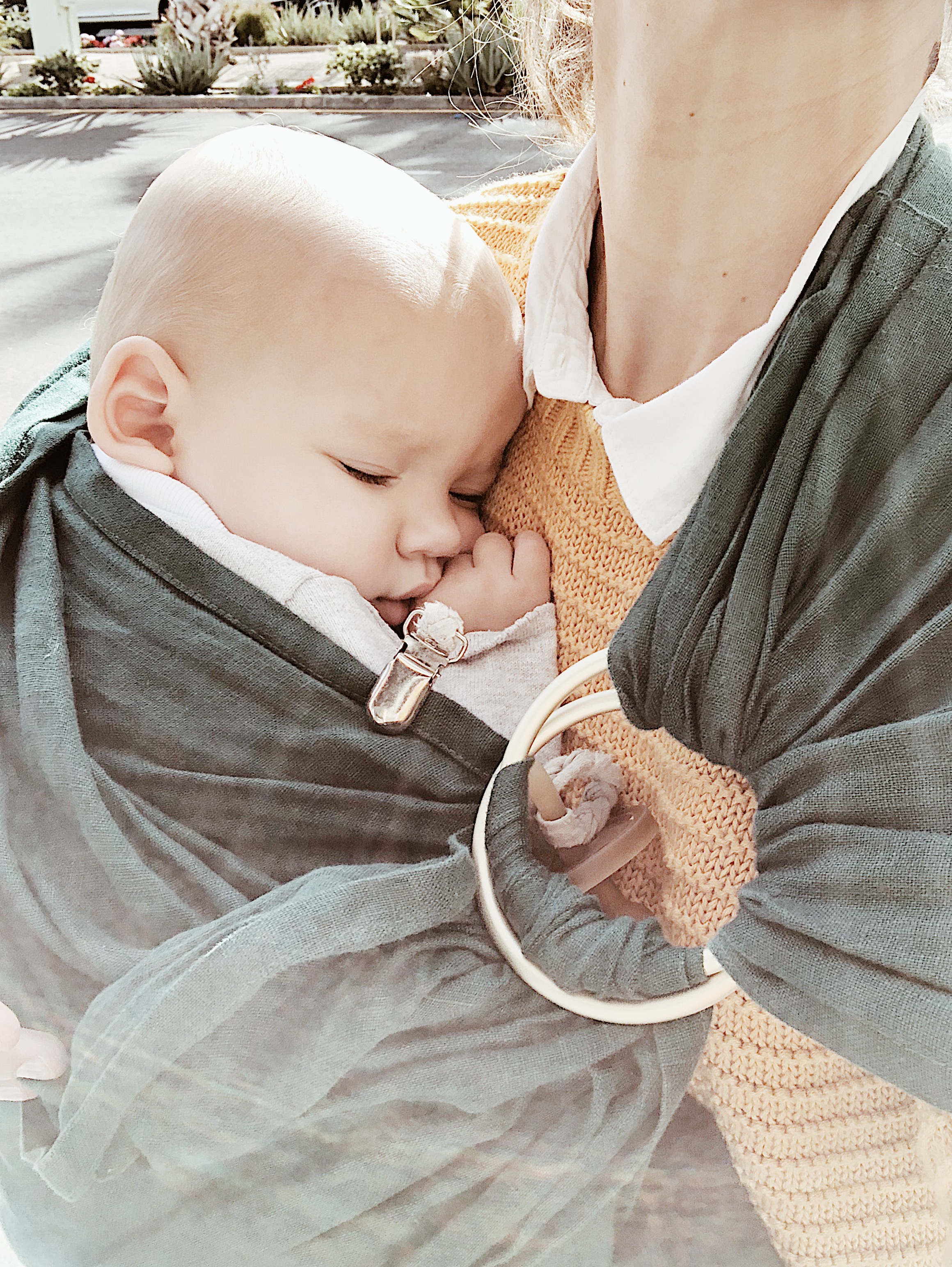
How do you safely breastfeed in a carrier?
Breastfeeding in a carrier is an additional benefit of babywearing that I didn’t mention above. However, I added it to the safety category because if you decide to breastfeed your baby while in the carrier you must proceed with caution.
I have heard many stories of mothers accidentally suffocating their children while breastfeeding them in a carrier. The last thing I want to do is go negative and scare the crap out of fellow mothers. Still, it is important to know the seriousness of making sure you babywear and breastfeed safely.
There are a few general tips I would give in regards to breastfeeding and babywearing:
- Only attempt breastfeeding in a carrier if your baby has complete control of their head. This means you might have to wait until your baby is older before you can breastfeed in a carrier.
- Never push your baby’s face into your breast using the carrier. Always make sure there is enough room for your baby to move their head away on their own if need be.
- Never cover your baby’s face while they eat. Always make sure they have access to fresh air. If you want to cover up your breast you can hold a blanket or the tail of your sling or wrap slightly away from their face. Always make sure there is an opening where fresh air can flow through.
- ALWAYS pay attention to your baby. Never stick your baby on the boob and get distracted by other things. Keep checking to make sure they are breathing easily and are not overheated or uncomfortable.
I nurse my daughter in the sling all the time. If she is not feeling good I will nurse her in the sling as I stand and rock her to sleep. It can be very convenient for moms and very comforting for babies. Just make sure your baby is strong enough and follow my tips above to make it a pleasant experience for all.
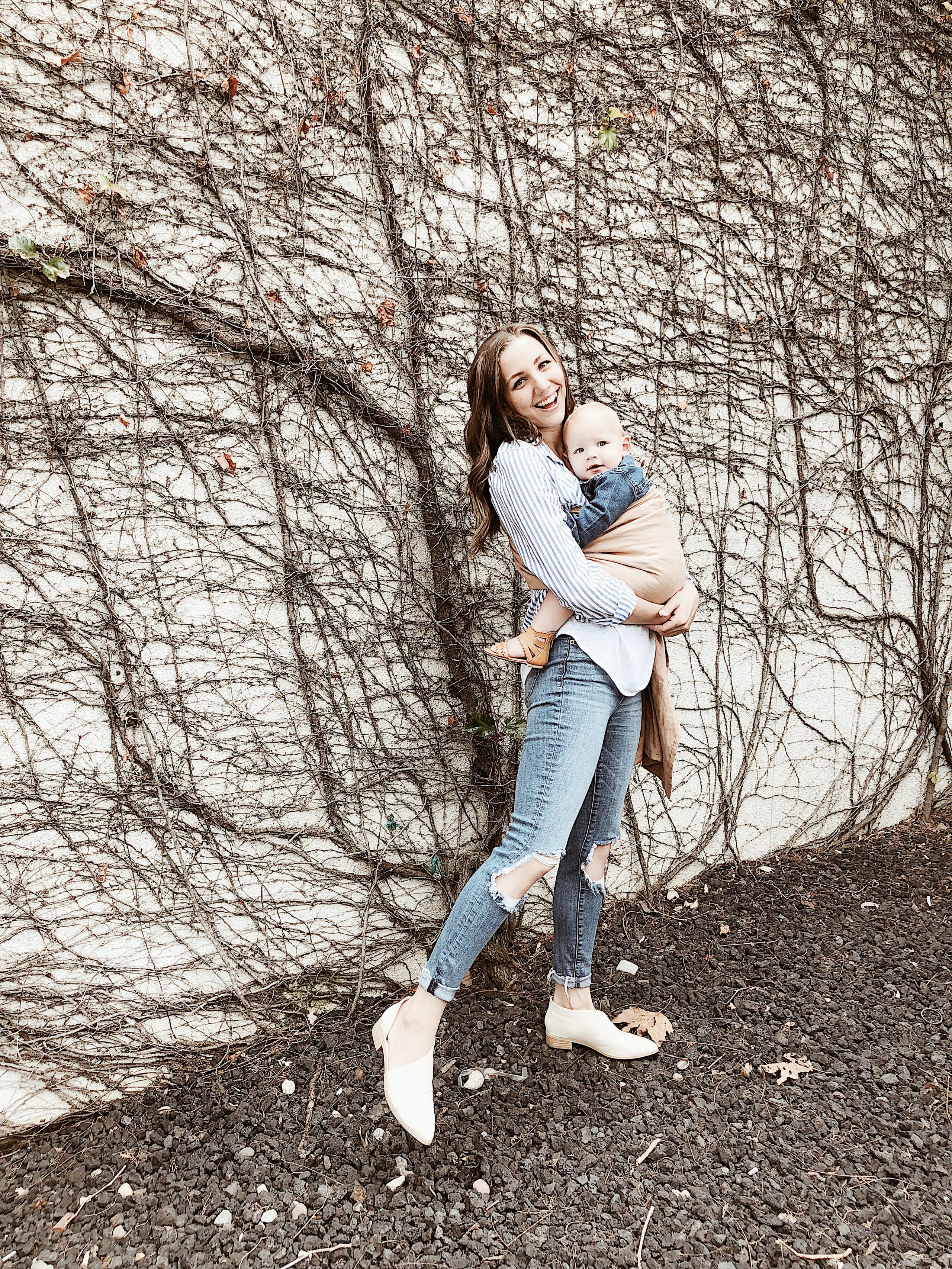
What are the different types of baby carriers?
There are basically 5 types of carriers. Each type of carrier is good for different weight ranges, budgets, and activities. However, it really comes down to personal preference when deciding on which carriers are best for you.
When Lily was between 6 and 9 months old, my favorite type of carrier was a wrap. As she got bigger and stronger, I fell in love with the comfort and ease of a ring sling. When I knew I would be carrying her for a long period of time, I preferred a structured carrier with more back support. Now I have my eye on a beautiful Meh Dais that will allow me to wear Lily easily on my back.
You can have just one type, one of each type, or a giant stash of all kinds of different carriers. Whatever you choose is up to you.
Below is a basic list of the 5 different types of carriers and the pros and cons of each
1. Wrap
Wraps are large, long pieces of fabric that you wrap around your body.
Pro – Wraps are wonderful for newborns and small babies. This is because the wraps are completely adjustable and you can create the perfect pouch to place your tiny baby. They allow such a close and intimate hold.
Con – They are extremely overwhelming at first and take longer to put on than other carriers. Because the fabric piece is usually VERY large it takes a lot of practice to get it right. I had to watch many tutorials before I finally figured out how to wrap the fabric correctly.
Weight range – If the fabric of the wrap is thinner, the weight range is usually up to 25 lbs. If the fabric is thicker, the weight range can go up to 35 lbs.
Solly Baby Wrap
2. Ring Sling
A ring sling consists of a piece of fabric that you thread through two rings over one shoulder. Ring sling gives the same comfortable organic feel of a wrap, but it’s a lot simpler to put on.
Pro: Slings are my favorite carrier for older babies and toddlers. Because of the one-shoulder configuration, your baby/toddler can sit more to one side, like you’d sit them on your hip, and then they have an easier time looking around.
Con: There is definitely a technique to make sure you are wearing your baby correctly and comfortably. Some people find ring sling hard to use because of that.
Weight range: 8-35 lbs.
WildBird Ring Sling Baby Carrier
3. Pouch Sling
A pouch sling is a long tube of fabric you place over your shoulder.
Pro: Pouch slings are very easy to use because there are no adjustments that need to be made. You just put the sling over your should and place your baby inside.
Con: Because they cannot be adjusted it’s harder to make sure you are getting the best positioning and fit. It is also harder to share the sling between parents and caregivers because not everyone will be the same size, therefore, the sling won’t always fit.
Weight range: Up to 35 lbs.
4. Meh Dai
Meh Dais are modernized traditional Asian-style baby carriers. They have a piece of fabric with two shorter straps that go around the waist and two padded straps to put over your shoulders.
Pro: Meh Dais are great for wearing older babies and toddlers on your back (Some can hold up to 45 lbs!). They are basically a backpack for your baby where they can sit up high and have a great view of the world around them.
Con: I had a hard time thinking of a con for this one! The only thing semi-negative about them is that they don’t fit as easily in a diaper bag as a wrap or sling would.
Weight range: 7-35 lbs.
Sakura Bloom Onbuhimo Carrier
5. Structured Carrer
Structured carriers are the most heavy duty carrier out there. They are usually fully padded and offer a ton of support through buckles and other structural reinforcement.
Pros: Structured carriers are the best for wearing for long durations because they offer so much support. That also makes them great for parents who might have back issues and need more support than wraps and slings can give. Structured carriers are also the easiest to use. They don’t require as many adjustments because everything is already pretty much in place. This is great if you don’t want to fuss around with a bunch of fabric.
Cons: They are padded and large which means they don’t fold or fit as easily in a diaper bag.
Weight range: 12-45 lbs. (If you purchase an insert you can go as low as 7 lbs.)
Nuna CUDL 4-in-1 Baby Carrier
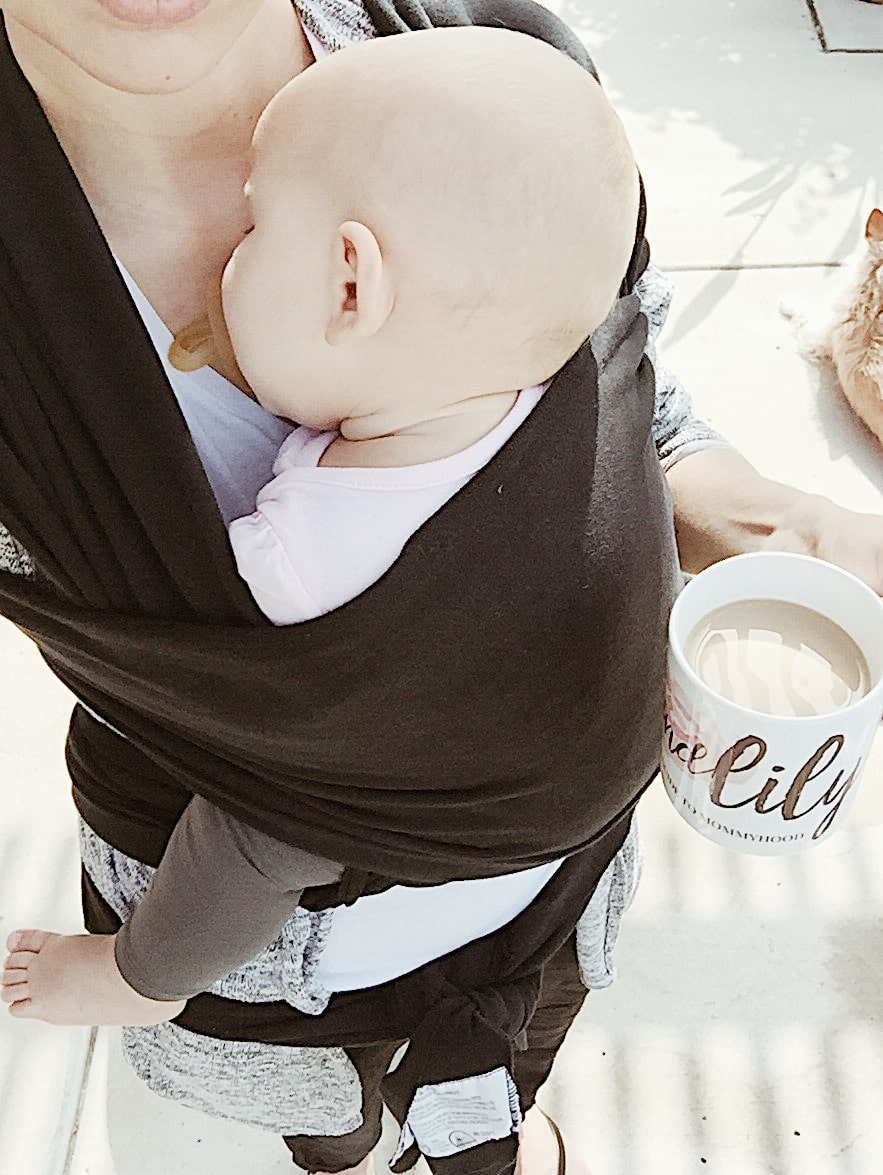
Summery
As long as you do it safely, babywearing can be incredibly beneficial for both the parent and the child. It truly is such a magical experience to carry your child heart to heart. It’s one of those comforting things that gives you the fuel you need to power you through those less than magical moments of parenthood.
Resources:

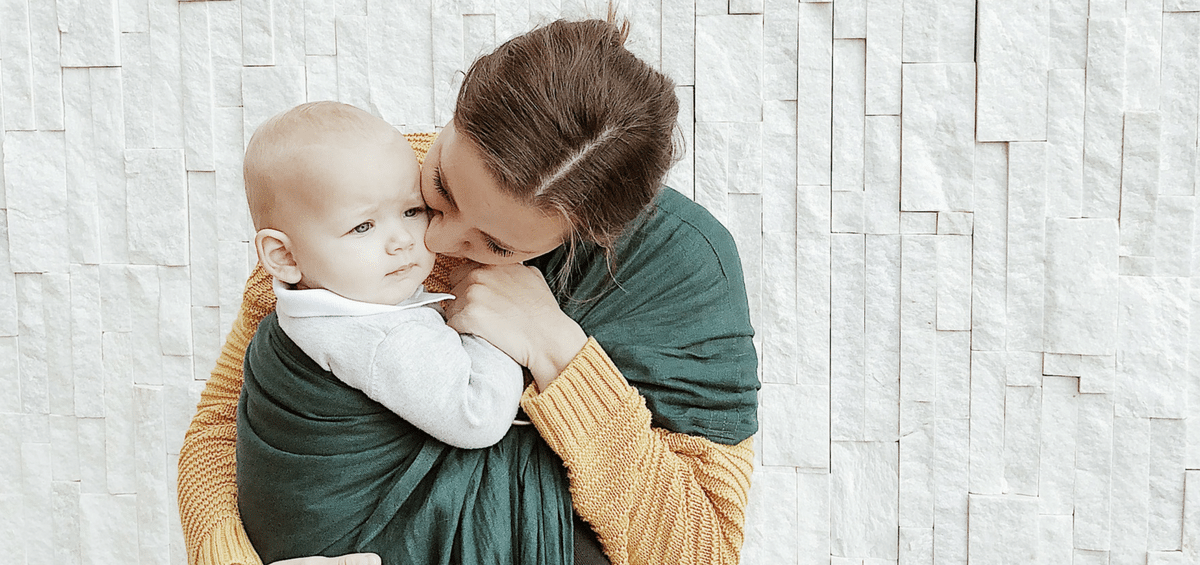
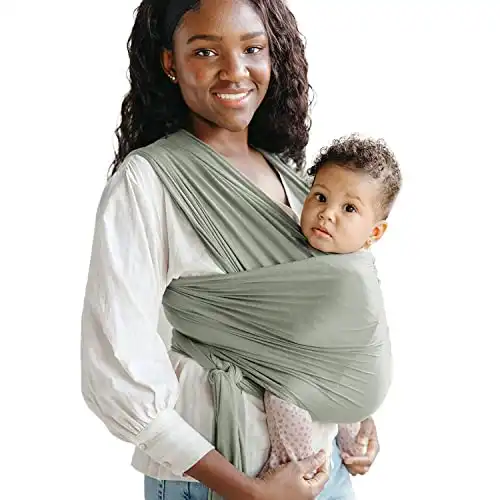
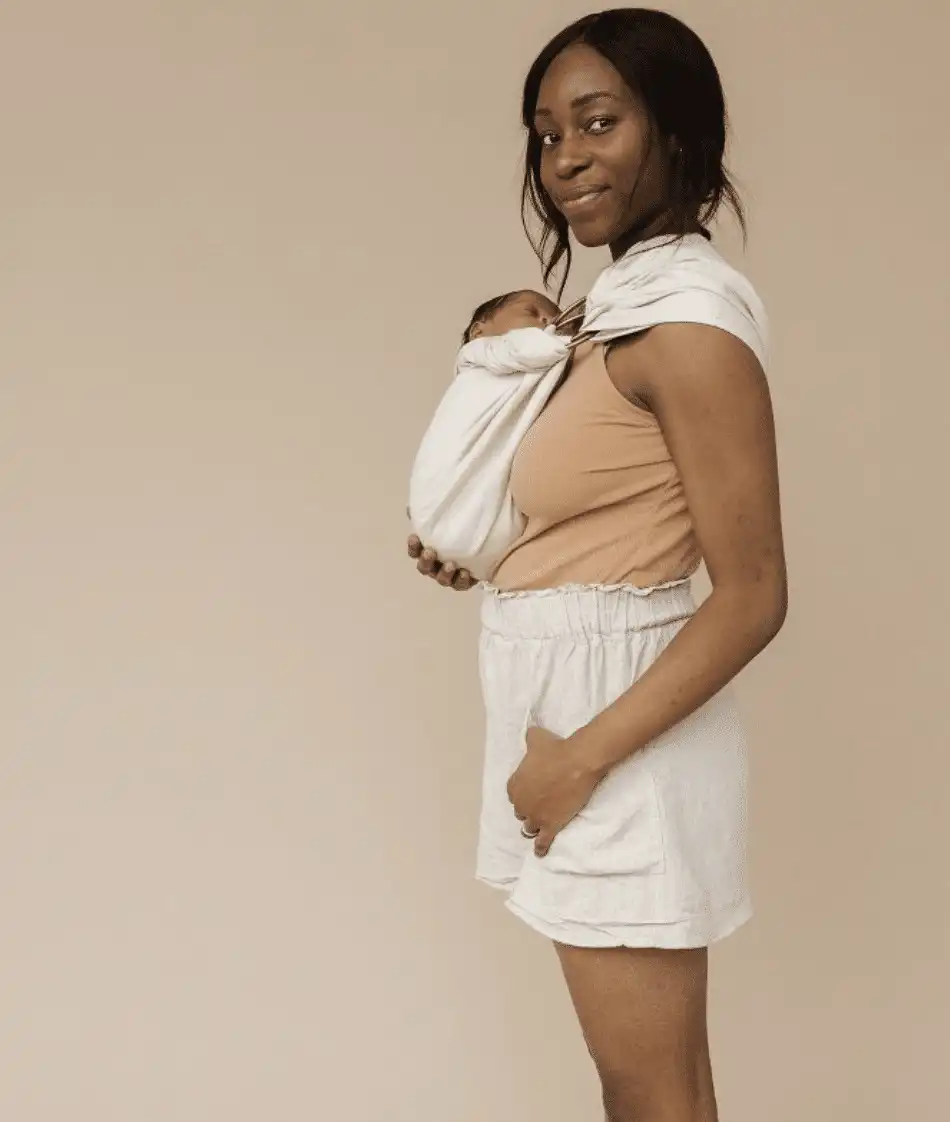
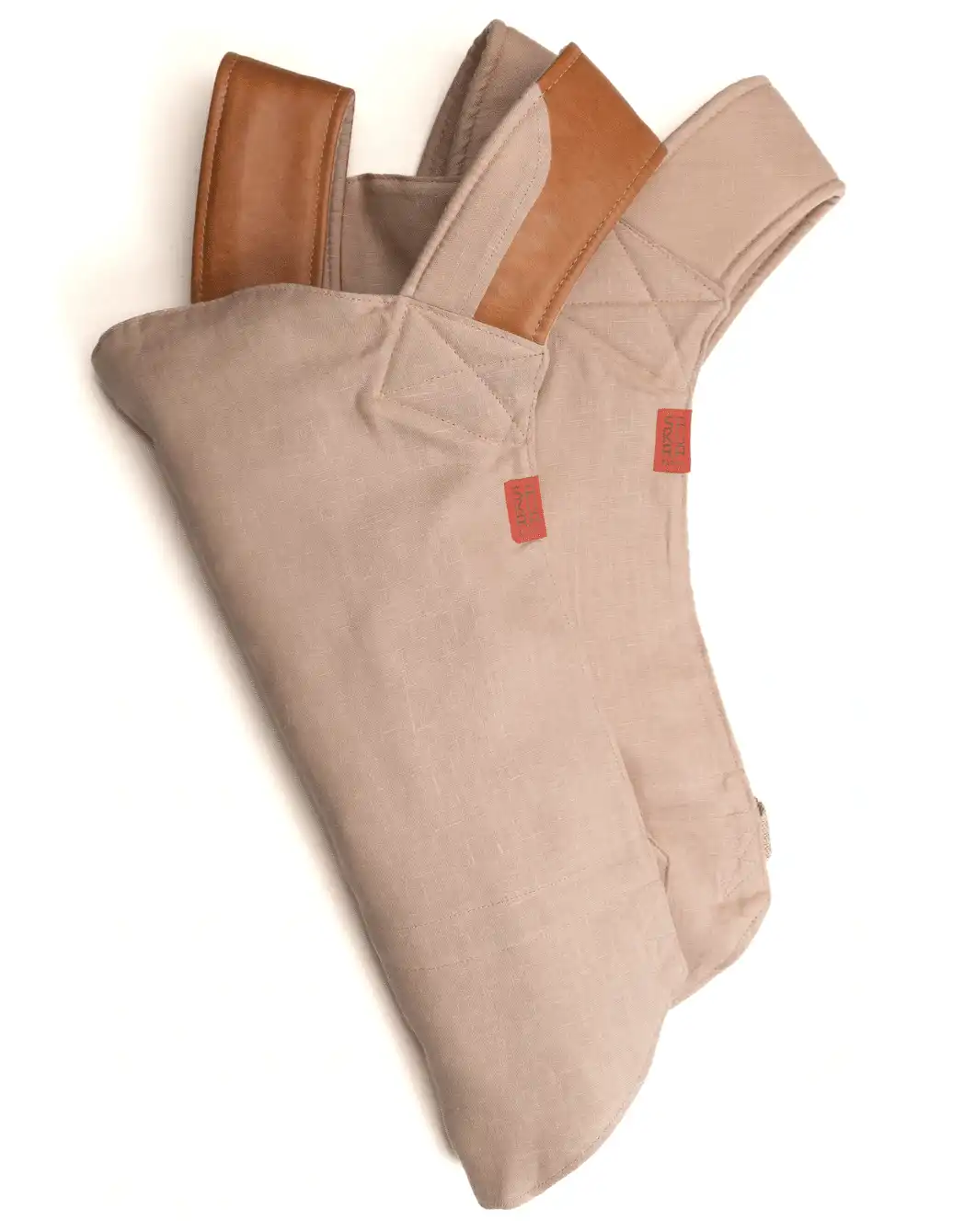
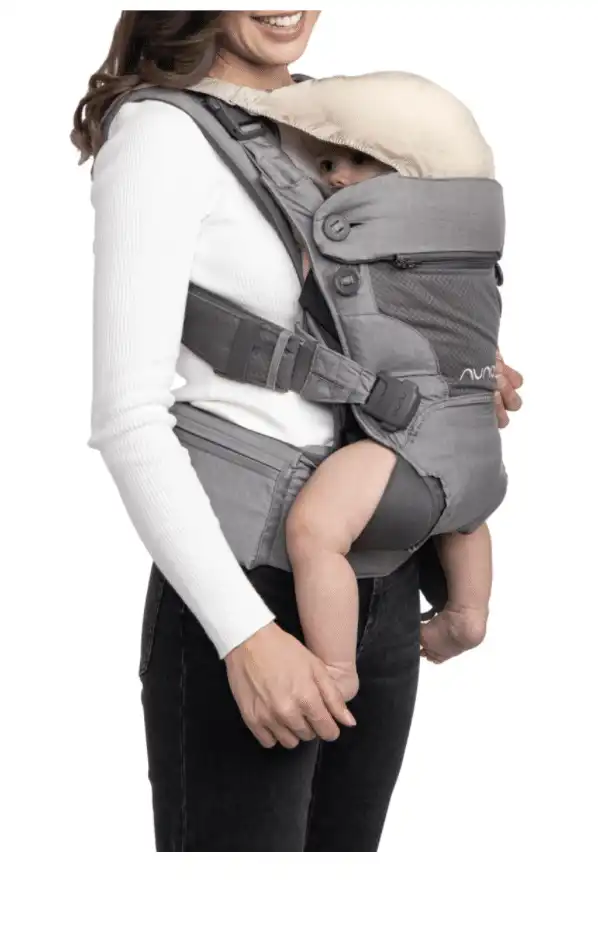
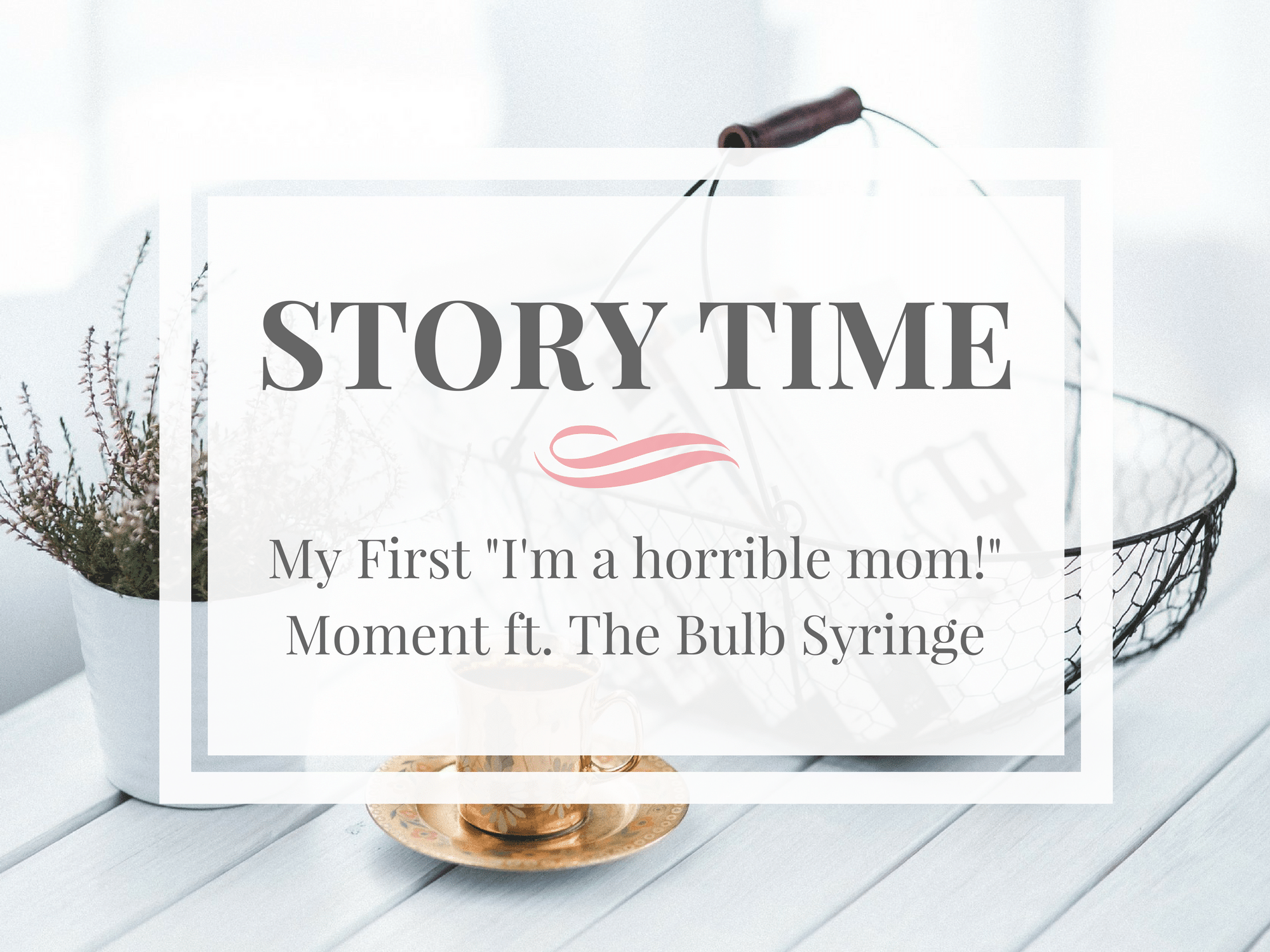


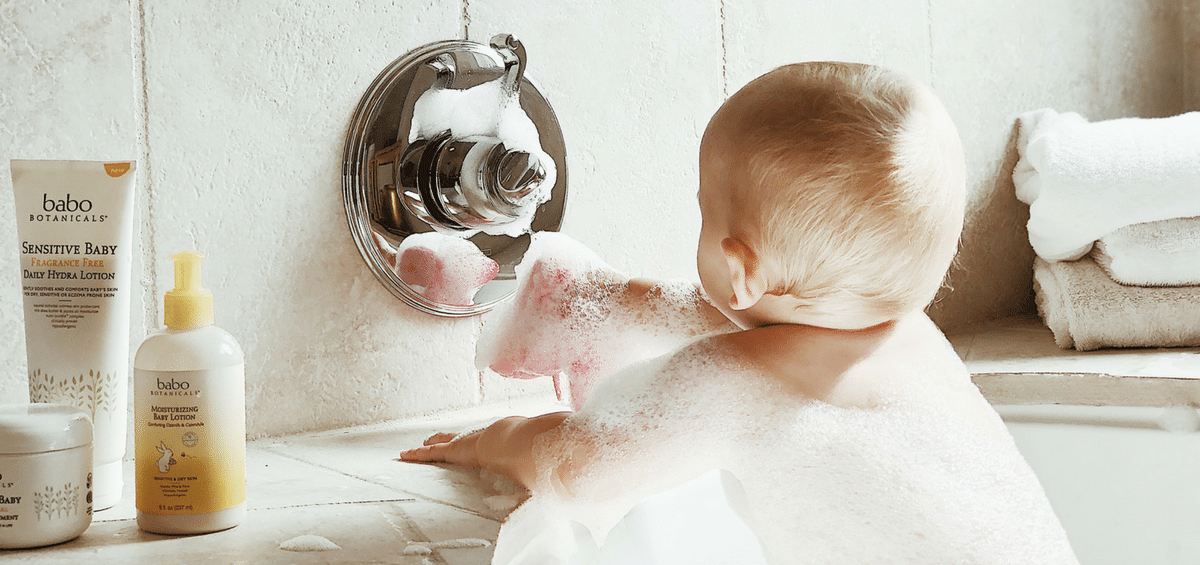
Leave a Reply